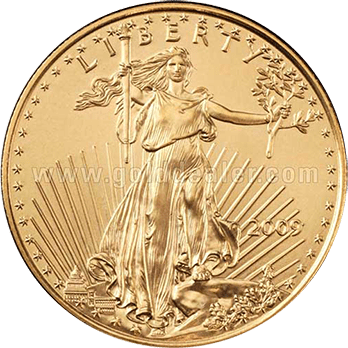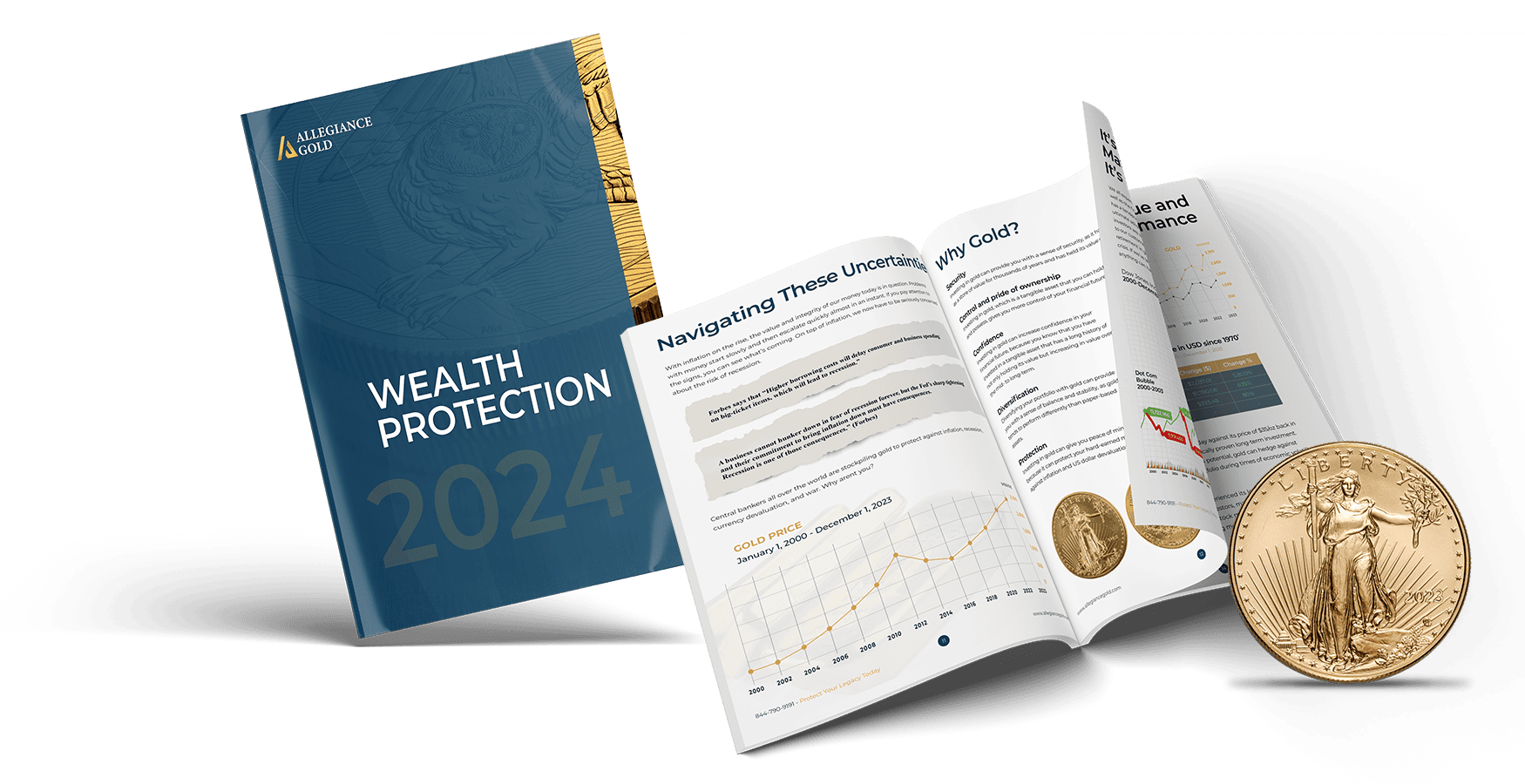Gold’s qualities make it one of the most coveted metals in the world and a popular gift in the form of jewelry. What makes this precious metal ideal for your investment portfolio?
Global Investors carefully monitor the price of gold and what drives its price movement. Gold recently surpassed the anticipated $2000/oz benchmark and is now poised to increase another 50% within the next 12-24 months. The question is should you include it in your investment or retirement plan. Here are our top 10 reasons why this bullion should be part of a balanced portfolio.
Top 10 Reasons to Invest in Gold:
-
The weakness of the US dollar.
Although the U.S. dollar is one of the world’s most important reserve currencies, when the value of the dollar falls against other currencies as it did between 1998 and 2008, it prompts investors to flock to the security of gold, which raises gold prices. The price of gold nearly tripled between 1998 and 2008, reaching the $1,000-an-ounce milestone in early 2008 and nearly doubling between 2008 and 2012, hitting around the $1800-$1900 mark. Earlier this month, August 2020, Gold broke records again, surpassing the $2000 benchmark and although it has dipped, it is expected to keep soaring amid the economic turmoil. Since gold is priced in dollars, its value increases when the dollar contracts. Bullion and the U.S. dollar have a long history of trading inversely. In fact, gold often outperforms most major currencies on an annual basis.
-
History of maintaining and increasing its value.
Since the discovery of gold thousands of years ago, it has been a coveted commodity and store of value. Although global currencies are no longer backed by gold, it remains highly valued, particularly during economic downturns when many other assets depreciate. Unlike paper currency, coins or other assets, gold has maintained its value throughout the ages. Investors see gold as a way to pass on and preserve their wealth from one generation to the other.
-
Central banks are adding to their bullion reserves.
Since 2010, global central banks have been net buyers of gold as they move to diversify their reserves, with net purchases totaling 371 tons in 2017, according to the World Gold Council. Central banks buying gold to store value is a sign that investors too might want to hold some gold in their portfolio.
-
Proven hedge against inflation.
Gold has historically been an excellent hedge against inflation because its price tends to rise when the cost of living increases. As the dollar goes down in value during this time, inflation eats away at cash and Treasury yields, making them less attractive as safe-haven assets, which then leads many investors to gold. Over the past 50 years investors have seen gold prices soar and the stock market plunge during high-inflation years.
-
Gold is one of the best portfolio diversifiers.
Historically, gold has reduced losses during periods of economic distress or instability in the markets and helped to improve portfolio risk-adjusted returns. It is a mainstream asset as liquid as other financial securities and its correlation to major asset classes has been low in both expansionary and recessionary periods. The key to diversification is finding investments that are not closely correlated to one another; gold has historically had a negative correlation to stocks and other financial instruments.
-
Bullion is seen as a safe-haven during times of political instability.
Just as investors flock to bullion during financial instability, many also do so in times of rising world tensions and geopolitical turmoil. For this reason, gold is sometimes called the “crisis commodity” and its price often appreciates the most when confidence in governments is low.
-
Global government debt is skyrocketing.
Total global government debt is at an all-time high, with around $120 trillion added since 2008. Another financial crisis could be in the works due to the growing risks of such large deficits. Savvy investors and savers might very well see this as a sign to allocate a part of their portfolios in “safe haven” assets that have historically held their value in times of economic contraction, such as gold.
-
Negative real rates.
One consequence of strong inflation is that real rates—what you get when you subtract the current consumer price index (CPI) from the nominal rate—can turn negative. And when this happens, gold has typically been a beneficiary. This is the Fear Trade in action pushing investors into perceived safe-haven assets.
-
Gold demand is increasing.
In previous years, the increased wealth of emerging market economies boosted demand for gold. In many countries, gold is intertwined with the culture. India is one of the largest gold-consuming nations in the world. In fact, gold jewelry ownership is so widespread in India that as of 2016, Indian households owned more gold than the top six central banks combined. One of the biggest factors driving the gold price is known as the Love Trade, or the seasonal gift-giving of gold jewelry prominent in China and India, the two largest bullion consumers. With rapidly growing middle classes, demand is expected to rise even further. Given the price increase, demand for gold has also grown among many investors who are beginning to see commodities, particularly gold, as an investment class into which funds should be allocated.
-
The World gold supply is shrinking.
Gold is both scarce and finite – another reason why it’s so highly valued. Exploration budgets for mines are shrinking as mining costs are rising. With lower annual gold production and rising demand, gold prices consistently rise.
Gold is beneficial to a well-diversified investment portfolio given its price increases in response to various events causing paper investments, such as stocks and bonds, to decline. Although the price of gold can be volatile at times for a term, it has always maintained its value over the long term. Throughout the years, it has served as a trusted hedge against inflation and the erosion of major currencies, thus being an investment well worth considering.



 Custom Precious Metals IRA
Custom Precious Metals IRA Gold IRA
Gold IRA Gold Products
Gold Products Silver Products
Silver Products Platinum
Platinum